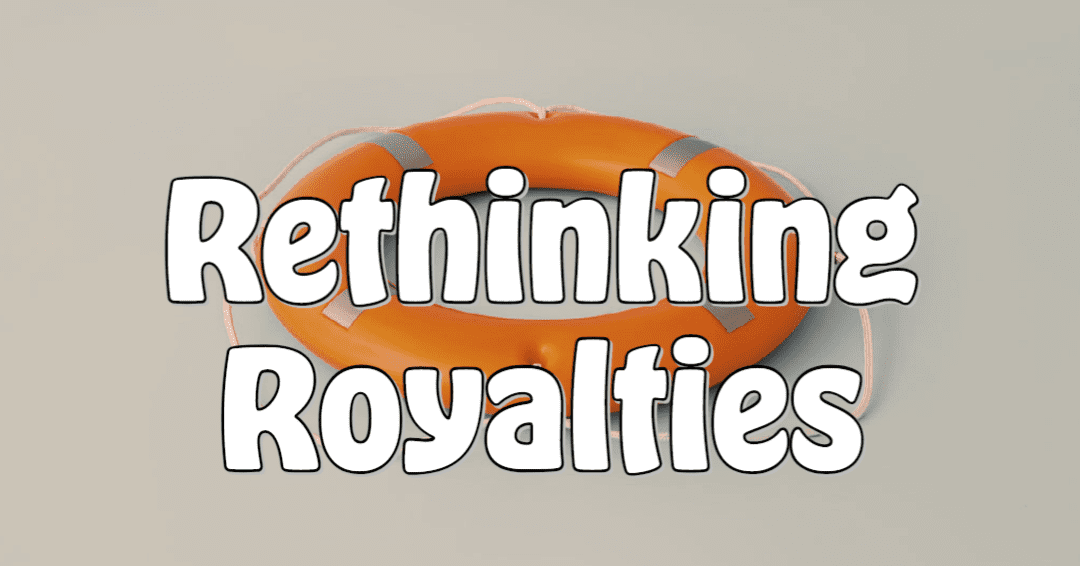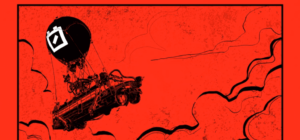
In the dynamic world of non-fungible tokens (NFTs), recent decisions by prominent platforms Blur and OpenSea to remove royalties have sparked a contentious debate. While these changes have brought cheers from traders, they’ve also raised concerns about the long-term health of the NFT ecosystem. The crux of the argument is this: the removal of royalties, while seemingly an opportunity for traders, has inadvertently set the NFT ecosystem back by removing an essential source of liquidity for projects.
The Trader’s Windfall
From the trader’s perspective, the decision to eliminate royalties was a windfall. The removal of the customary 5% fee, among others, meant that they could flip JPEGs for a profit more easily, thereby increasing the appeal of the NFT market. However, this short-term gain for traders may lead to long-term losses for the NFT market as a whole.
The Royalty Lifeline and Its Impact
Royalties have played a pivotal role in supporting and fostering the development of NFT projects. These fees provided a steady stream of income that helped to fund continued innovation and maintain liquidity within these projects. With their removal, many projects that had their business models built around these royalties now face an uncertain future.
Case Study: The Elementals Drop
A prime example of these challenges is the recent Elementals drop by Azuki. Many collectors expressed shock at the high mint price of 2 ETH in the dutch auction, a cost that was exacerbated by the absence of royalties. This event underscored the paradoxical behavior of collectors, who had celebrated the removal of fees but were unprepared for the subsequent increase in mint prices.
Azuki may have just fumbled their bag.
My uncensored thoughts on the Elementals mint.👇
(1/19)🧵 pic.twitter.com/IFZcVDdyAf
— Kermit 🐸 (@crypto__kermit) June 26, 2023
The Ripples in the Artistic Realm
The effects of this change extend beyond project developers and traders, reaching into the realm of the artists themselves. While not as directly affected as project creators, artists still face the repercussions of a culture shift within the NFT community. The removal of royalties challenges the ethos of the NFT world, which has always prided itself on directly supporting creators.
The Road Ahead: Potential Outcomes and Solutions
Looking ahead, we can anticipate several potential outcomes. For one, projects may start to reserve a percentage of NFTs in their treasury. As the price of these tokens increases, the projects can then sell their reserved NFTs for profit, creating a new source of income to replace the lost royalties. However, this strategy is not without its own risks and challenges, and it remains to be seen how it will play out in the long run.
- Development of New Pricing Structures The removal of royalties could lead to the evolution of new pricing structures within the NFT market. For instance, artists and creators could start pricing their work higher to compensate for the lack of a recurring income stream. However, this could also result in a higher barrier to entry for new collectors and possibly reduce the overall trading activity.
- Implementation of Tiered Royalty Structures A possible solution could be the introduction of tiered royalty structures, where the royalty percentage varies based on the selling price of the NFT. This could ensure that creators continue to receive royalties, while not placing an excessive burden on traders dealing with lower value NFTs.
- Emergence of New Revenue Models In the absence of royalties, we might see the development of new revenue models for NFT creators. For instance, creators might start offering additional services or products related to their NFTs, such as physical goods, exclusive access to events or content, or even participation in the creative process itself.
- Platform-Specific Royalties Another solution could be for NFT platforms to introduce their own royalty systems, where a percentage of every sale on the platform is distributed among creators. This would need to be balanced carefully to ensure it doesn’t discourage trading activity, but it could offer a way to sustain creators in the absence of direct royalty payments.
- Increased Importance of Initial Sales Without royalties, the initial sale of an NFT becomes even more critical for creators. This could lead to more emphasis on launch events and marketing to maximize the revenue from the initial sale.
- Voluntary Tipping Mechanisms Platforms could introduce voluntary tipping mechanisms, where buyers have the option to give additional funds to the creator of an NFT. This could help foster a culture of direct support for artists and creators, while allowing traders to keep their margins intact.
- Increased Reliance on Third-Party Patronage Artists and creators might become more reliant on third-party patronage or sponsorships, potentially altering the dynamics of the NFT space and leading to a greater commercialization of the sector.
As we navigate this evolving landscape, it is crucial for the community, platform providers, and regulators to work together to address these issues. The health and vibrancy of the NFT ecosystem depend on finding a balance that caters to the interests of all stakeholders, from traders and collectors to artists and project creators. In conclusion, the decision by Blur and OpenSea to remove royalties, while initially hailed as a boon by traders, has had a more complex and far-reaching impact on the NFT ecosystem. It serves as a stark reminder that in the rapidly evolving world of NFTs, short-term gains can sometimes come with long-term costs. As we move forward, the challenge will be to learn from these experiences and work together to create a more sustainable and equitable NFT market.
- SEO Powered Content & PR Distribution. Get Amplified Today.
- PlatoData.Network Vertical Generative Ai. Empower Yourself. Access Here.
- PlatoAiStream. Web3 Intelligence. Knowledge Amplified. Access Here.
- PlatoESG. Automotive / EVs, Carbon, CleanTech, Energy, Environment, Solar, Waste Management. Access Here.
- BlockOffsets. Modernizing Environmental Offset Ownership. Access Here.
- Source: https://www.nftculture.com/guides/the-unforeseen-consequences-of-removing-royalties-a-look-at-the-nft-ecosystem/
- :has
- :is
- :not
- :where
- 26
- a
- About
- access
- activity
- Additional
- address
- ahead
- All
- Allowing
- also
- always
- among
- an
- and
- Another
- anticipate
- appeal
- argument
- around
- Art
- artistic
- Artists
- AS
- At
- Auction
- Azuki
- back
- bag
- Balance
- barrier
- based
- BE
- become
- becomes
- Beyond
- blockchain
- blur
- brought
- built
- burden
- business
- but
- buyers
- by
- CAN
- carefully
- case
- case study
- caters
- celebrated
- challenge
- challenges
- change
- Changes
- cheers
- collectors
- come
- commercialization
- community
- complex
- Concerns
- conclusion
- Consequences
- content
- continue
- continued
- Cost
- Costs
- could
- create
- Creating
- Creative
- creator
- creators
- critical
- crucial
- crypto
- Crypto Art
- Culture
- dealing
- debate
- decision
- decisions
- developers
- Development
- direct
- directly
- distributed
- Doesn’t
- Drop
- Dutch
- dynamic
- dynamics
- easily
- ecosystem
- effects
- eliminate
- emphasis
- ensure
- entry
- equitable
- essential
- ETH
- Ethos
- Even
- Event
- events
- Every
- evolution
- evolving
- example
- Exclusive
- exclusive access
- Experiences
- expressed
- extend
- Face
- far-reaching
- fee
- Fees
- finding
- Flip
- For
- Forward
- Foster
- fostering
- from
- fund
- funds
- future
- Gain
- Gains
- Give
- goods
- greater
- had
- Have
- Health
- help
- helped
- High
- higher
- How
- However
- HTTPS
- Impact
- importance
- in
- Income
- Increase
- Increases
- increasing
- initial
- initially
- Innovation
- instance
- interests
- into
- introduce
- Introduction
- issues
- IT
- ITS
- itself
- JPEGs
- just
- Keep
- Lack
- landscape
- launch
- lead
- leading
- LEARN
- Liquidity
- Long
- long-term
- Look
- losses
- lost
- lower
- maintain
- many
- margins
- Market
- Marketing
- Maximize
- May..
- meant
- mechanisms
- might
- mint
- models
- more
- move
- move forward
- Navigate
- Need
- New
- news
- NFT
- NFT community
- nft creators
- nft market
- nft news
- NFT platforms
- NFT projects
- NFT space
- NFTs
- non-fungible
- non-fungible tokens
- NON-FUNGIBLE TOKENS (NFTS)
- now
- of
- offer
- offering
- on
- ONE
- OpenSea
- Opportunity
- Option
- or
- Others
- out
- outcomes
- overall
- own
- participation
- payments
- percentage
- perspective
- physical
- pivotal
- placing
- platform
- Platforms
- plato
- Plato AiStream
- Plato Data Intelligence
- PlatoAiCast
- PlatoData
- Play
- played
- possible
- possibly
- potential
- potentially
- price
- Prices
- pricing
- Prime
- process
- Products
- Profit
- project
- projects
- prominent
- provided
- providers
- raised
- rapidly
- reaching
- realm
- receive
- recent
- recurring
- reduce
- Regulators
- related
- reliance
- remains
- removal
- remove
- removing
- repercussions
- replace
- Reserve
- reserved
- result
- revenue
- ripples
- risks
- road
- Role
- royalties
- royalty
- Run
- sale
- sector
- see
- seen
- sell
- Selling
- serves
- Services
- set
- several
- shift
- short-term
- solution
- Source
- Space
- sparked
- stakeholders
- stark
- start
- start offering
- steady
- Still
- Strategy
- stream
- Study
- subsequent
- such
- support
- Supporting
- sustainable
- Systems
- that
- The
- The Projects
- their
- themselves
- then
- thereby
- These
- they
- third-party
- this
- Tipping
- to
- together
- Tokens
- Traders
- Trading
- treasury
- true
- Uncertain
- unforeseen
- value
- voluntary
- was
- Way..
- we
- Web3
- were
- which
- while
- WHO
- whole
- will
- with
- within
- without
- Work
- work together
- world
- would












